The unlikely friendship between prizefighter Gene Tunney and dramatist George Bernard Shaw is explored in a book by the boxer’s son, Jay Tunney.
There are many books about famous literary friendships. John Keats, Lord Byron, and Percy Bysshe Shelley have more than a few dedicated to them, as do Edith Wharton and Henry James; Ernest Hemingway, and F. Scott Fitzgerald. While these relationships are certainly interesting to dedicated readers and valuable for scholars, the bonds between writers and their non-writer friends can be even more compelling because of their unexpected nature and their basis in something outside of literary pursuits. For instance, T.S. Eliot and Groucho Marx exchanged letters for years; Mark Twain was a close friend of the Standard Oil magnate Henry Huttleston Rogers. As the recently published The Prizefighter and the Playwright explores, such a friendship existed between the great Irish dramatist George Bernard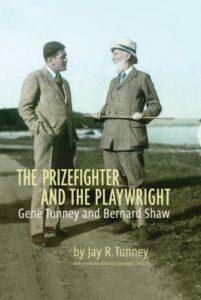 Shaw and Gene Tunney, the two-time World Heavyweight Champion.
Shaw and Gene Tunney, the two-time World Heavyweight Champion.
“The things that brought them together were boxing, a love of literature…and a few negative comments,” the author Jay Tunney explained during our conversation in his Manhattan pied-à-terre. Jay, the third son of Gene Tunney and Polly Lauder Tunney, had wanted to write a book about his father for quite some time but struggled to figure out an angle from which he could approach the story. After many years of working on a successful entrepreneurial venture in South Korea, where he introduced premium ice cream to the market, Jay sold his company and returned to the United States. It was then that he approached his mother with the idea of a book about Tunney, who had passed away in 1978.
“I was ready to do something else, to do a book about Dad, but Mother was absolutely the most private person who ever walked the face of the earth and didn’t really want that,” Jay recalled. She was, it turns out, very justified in her fear of the public eye: during his boxing career Tunney was the target of much ridicule and skepticism from the press because of his literary interests – considered rare for a pugilist – and the Tunneys had been excessively stalked by reporters around the time of their marriage after word got out that the heavyweight champion was engaged to an heiress from Connecticut.
But mother and son eventually reached a compromise. “In the meantime, there were other biographers who wanted to come in and do [official] biographies of Dad, but Mother especially didn’t want that.” Luckily, a family friend suggested Jay focus on Tunney and Shaw. As Jay remembers it, “the former U.S. ambassador to Sweden, Frank Fosberg, who was a great friend of my father’s, suggested I write about Shaw; he thought it would be a wonderful story. I thought it was a great idea, I checked that with Mother, and she was very happy…She thought that a book about Shaw and Dad’s friendship was the solution.”
Next came the research. About twelve years ago, Jay began interviewing his mother, who, as he discusses in the book, proved to be a valuable but complicated source of information. “Our mother wanted the story of their friendship shared because she knew how much our father valued Shaw’s friendship…” he writes in the epilogue. But, he adds “to our mother, everything was personal.” He fondly describes how she was, at times, forthcoming with information, even giving her first and only broadcast interview for a BBC Radio 4 program Jay co-wrote in 2000. At other times she wanted to call off the project but still played a vital role in Jay’s writing until her death in 2008, twelve days before her 101st birthday.
For further information, Jay began going through the many letters between Tunney and Shaw. He conducted extensive interviews with his siblings, other relatives, and any friends of his parents and the Shaws who were still alive. He compiled photographs of Tunney at significant points throughout his life and career, and rare images of Tunney and Shaw together – many of which are reproduced in the book. He sought out various resources on each of the men and immersed himself, as he put it, “in a crash course on Shaw.”
This was a real learning process for Jay. As a child, he recalled, he knew of Shaw on three peripheral levels: as the man in one of the two John Lavery portraits that hung in the family’s living room, as the torso captured by a Jo Davidson bust a few feet away from the painting, and as the driving force behind the lack of bacon in their household. (Shaw, a vegetarian, was responsible for putting Tunney in touch with Curtis Freshel, the man who would become Tunney’s business partner in marketing Bakon Yeast, a powdered bacon substitute). But that was about it. It wasn’t until Jay was older that he began to understand who Shaw was and the effect he had on his father, and it wasn’t until Jay began his research that he came to realize just how great that effect had been. A love of words and literature, for example, had always been there, but Jay’s work makes it clear that Tunney’s relationship with Shaw augmented these interests, and turned them into real points of developed knowledge and pride. This was dedicated work, and from it all emerges a much broader picture of the prizefighter, the playwright, and their surprisingly deep friendship.
Life Imitating Art
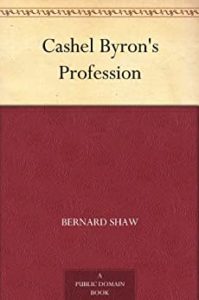 As Jay explains in his writing, the connections between the two men started before they knew each other – before Tunney was even born. In 1882 Shaw wrote his fourth novel, Cashel Byron’s Profession. The book, the most nearly successful of his five unsuccessful novels, details the life of Cashel Byron, an unlikely boxing champion. Cashel, a restless Irish youth without much of a future, leaves school and paves his own way to success. His smart, clean, and to-the-point fighting skills eventually earn him two consecutive world championship titles, but he then makes the unexpected move of retiring in order to pursue Lydia Carew, a beautiful heiress. The two marry and have four children, and Cashel finds success outside of the ring as well.
As Jay explains in his writing, the connections between the two men started before they knew each other – before Tunney was even born. In 1882 Shaw wrote his fourth novel, Cashel Byron’s Profession. The book, the most nearly successful of his five unsuccessful novels, details the life of Cashel Byron, an unlikely boxing champion. Cashel, a restless Irish youth without much of a future, leaves school and paves his own way to success. His smart, clean, and to-the-point fighting skills eventually earn him two consecutive world championship titles, but he then makes the unexpected move of retiring in order to pursue Lydia Carew, a beautiful heiress. The two marry and have four children, and Cashel finds success outside of the ring as well.
The book is not, by any means, one of Shaw’s most popular or provocative works. It was written very early in his career, only a few years after he had moved to London. He was still dependent on his family for support, as he spent his days reading and writing, and his nights socializing with the London intelligentsia. He was still turning himself into a writer, thinker, socialist, and wit – still becoming George Bernard Shaw as we think of him today.
Nevertheless, Cashel Byron is an important piece. It complicates our understanding of Shaw by highlighting his little-known love and knowledge of boxing; it has at its crux the idea of social transformation that is so central to many of his later works. In addition, the novel holds great significance as the impetus for one of Shaw’s most meaningful but seldom discussed friendships.
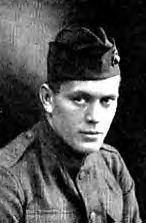
About thirty years after Shaw wrote Cashel Byron, the life of James Joseph Tunney, a poor Irish Catholic kid from the Lower West Side of Manhattan, began imitating art. Like Shaw’s Cashel, Tunney never finished at his Christian Brothers school: he had to leave at fifteen to help support his family. As everyone called him, Gene began learning how to fight from local boxing legends like Willy Green and further honed his skills in the ring during his time as a Marine in World War I. He developed an intelligent, “scientific” fighting style that served him well, was fair to his opponents, but sometimes earned him scorn from the press – Tunney went for the win, not the kill. At the end of an impressive career of professional fighting, in which he lost only one match (to Harry Greb), the “Fighting Marine” went on to reign as the World Heavyweight Champion from 1926-1928. Two weeks after his second championship win in the memorable “long count” fight against Jack Dempsey, Tunney permanently left boxing following his engagement to Mary “Polly” Lauder. They went on to have four children and, after the Second World War, Tunney found further success as a businessman.
In the midst of all these striking coincidences, as Tunney unwittingly lived out elements of the fictional life Shaw had created for Cashel, the two men became close friends.
But, as Jay recounted during our discussion and relates further in his book, Tunney and Shaw got off to a bad start. In hopes of securing himself a post-boxing career as an actor, Tunney approached the producer Lawrence Langner in 1926 about the possibility of starring in a stage version of Cashel Byron’s Profession. Langner posed the idea to Shaw, who gave various noncommittal answers before rejecting the offer. Hurt, Tunney took a verbal swipe at Shaw while in conversation with a reporter, making negative comments about the novel.
Fortunately, as Jay told me with amusement, the playwright was not offended by the boxer’s remarks. In fact, they had quite the opposite effect: “Shaw said, ‘my God that young man must have some taste, I’d love to meet him.’ And that got back to Dad.”
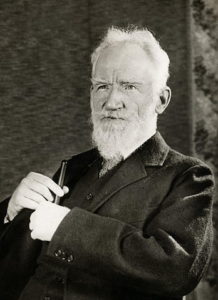
They didn’t actually meet until a few years later, in 1928, when the Tunneys were honeymooning after their wedding in Rome. As Tunney traveled throughout Europe trying to escape the press, Shaw repeatedly tried contacting him but kept missing him by little more than a day. Finally, when the couple arrived in London in December, Shaw and his wife Charlotte (also an heiress) invited them to a luncheon at their apartment in Whitehall Court.
The lunch, which Jay recreates in detail from his mother’s perspective, marked the beginning of a long friendship between the Tunneys and the Shaws. Each couple developed a great appreciation for the other, and Tunney and Shaw began to realize how much they actually had in common: G.B.S, as he insisted his friends call him, shared Gene’s love of boxing, and Tunney showed his deep interest in literature. A few months later, in April of 1929, the two couples reunited for a month-long stay on Bironi, a small island in the Adriatic Sea.
This stay makes up the heart of Jay’s book. While some chapters span a few years, Jay devotes the better part of five chapters to the month in Bironi. As we come to learn, Cashel Byron’s Profession was far from the only thing that connected the prizefighter and the playwright. From their time in Bironi on, after their many talks and a dramatic period with Polly’s health that solidified the bond between the Tunneys and the Shaws, the two men were also very good friends who communicated on spiritual and intellectual levels. The fact that Shaw’s novel more or less foreshadowed Tunney’s career was merely one of the many coincidences and points of interest that drew the two men together. Time slows down as Jay carefully describes the long daily walks Tunney and Shaw took together and the lasting effect their talks had on both men, on Tunney in particular. Shaw, Jay remarked, “was a great outdoor teacher. That was how their relationship worked: Shaw was the teacher and Dad the pupil.”
The Bookish Boxer
In America Tunney had been told that his profession as a boxer and his love of reading and intense personal discipline was incongruous and strange. The idea of a boxer who read a lot and led a principled, highly ascetic lifestyle did not sit well with many boxing fans and sportswriters. Opinions, Jay told me, were divided: some people thought it was all an act, they didn’t believe that Tunney actually spent his spare time reading rather than, as Jay put it, “having a few beers at night and running around with the girls at the training camps.” Others balked at the idea of a boxer with his nose stuck in a book and were put off by the extent to which Tunney kept to himself. “Reporters would say ‘how can he be a bigger lover of books than we are? We’re the wordsmiths, who does he think he is?’” Jay added, “Dad really didn’t understand that part. He could probably have been more empathetic, but he just didn’t.”
In Europe with G.B.S., however, it seems that the bookish boxer was able to reconcile these two parts of himself and further his learning. Both men were more or less autodidacts, and Tunney had much to learn from the playwright who was forty years his senior. He came to, as Jay aptly phrased it, “build his intellect like he had built his muscles. He knew that both were buildable things.” According to Jay’s account, they talked about everything from the theories of the 18th-century French naturalist Jean-Baptiste Lamarck, to the music of Richard Strauss; everyone from Ibsen to H.G. Wells. “Shaw was a real spiritual and intellectual father to Dad; his own father never really made the grade. Dad thought Shaw was a saint.”
The versions of George Bernard Shaw and Gene Tunney that we see in The Prizefighter and the Playwright are departures from the way history remembers each of the men. People considered Shaw to be “kind of a didactic guy, someone who talked down,” Jay said. They had a hard time separating the writer from his works. Through talking with his mother, however, Jay came to realize that the Shaw his parents knew was very different. “It was through her that I came to find that Shaw was actually full of affection… He had a wonderful, devilish, Irish sense of humor that people often ignore. Dad did too, that’s probably part of why they got along so well.” Jay also presents a more complicated rendering of Shaw’s self-proclaimed atheism, exploring the spiritual discussions G.B.S. frequently had with his younger, more devout friend. This difference in belief is not portrayed as an issue of contention, but as something from which both men learned a lot.
Taking readers beyond the bad press his father once received, Jay shows Tunney to have been a complex and highly admirable man. “Dad had a lot of character, always did. He had a strong Irish Catholic upbringing and he was very moral, very principled. His whole approach to life was from that angle.” We see Tunney as a boy, sitting at the kitchen table at night, lining up one hundred matches, end to tip, and then reversing them — all to teach himself patience and discipline. We see him in his twenties as a dedicated boxer genuinely confused by the public’s reaction. We see him, older, as a dear friend, visiting Shaw for the last time at Ayot St. Lawrence, his house in England, before the playwright’s death in 1950. We see him, later, as a father, quizzing his children on Shakespeare and encouraging them to keep journals of word definitions – just as Tunney did throughout his life.
In this sense, there does seem to have been a corrective effort behind the book, an attempt to set the record straight, though it does not necessarily come at the expense of objectivity. Jay admitted that it was initially hard to be his father’s narrator: “The experience was awkward at times. I had to watch my subjectivity.” But he ultimately found that “it had a lot to do with voice. Referring to Dad as ‘Gene Tunney,’ referring to him in an objective way, allowed me to see him in a more objective way.” Indeed, Jay’s portrayal of his father comes across as extremely considered, realistic, and fair.
That a kid who grew up in a cold water flat in the West Village and left school at fifteen to work in a butcher’s shop would grow up to be a two-time World Heavyweight Champion, husband of a smart and beautiful heiress, and close friend to George Bernard Shaw, is nothing short of amazing. But that very trip down an unlikely path to success is actually the heart of Jay’s book and was, possibly, the cornerstone of the bond between Tunney and Shaw.
As Jay put it, “Shaw was drawn to Dad because he just loved supermen. He loved winners, and Dad was a champion. He transformed himself, he literally transformed himself.” This is key in Shaw’s works too, in characters from Cashel Byron to the flower girl Eliza Doolittle. Thanks to Professor Henry Higgins’ lessons in elocution, Eliza goes from having a thick cockney accent to possessing the manner of royalty — but that isn’t really the important part. Eliza turns herself into an independent being, one who, in the end, doesn’t need Higgins. As Jay elaborated, “The biggest idea in all of this is a reinvention of oneself. You’re going to need your Higgins but you’re also going to have to do it yourself. And Eliza did do it herself.”
He also sees the idea of reinvention as being central in Shaw’s life: “Shaw was the image of self-reinvention, of re-creation. Little timid Shaw arrived in England at the age of twenty. One of the first things he did was write five novels, all of them unsuccessful, but he kept going.” To keep going was no easy task, but it’s something that, significantly, Tunney, Shaw, and many of Shaw’s best characters were able to do. “It’s easy,” Jay added, “for us to be romantic about it, but it really was that way. We’re mostly given the freedom to make things out of ourselves and do something different than what our father or grandfather did, but it wasn’t like that then. Dad broke out of that European trap, and so did Shaw.”
At the end of our conversation, Jay concluded, “It really is all about transforming yourself.” Then, with an ease that would have made both Shaw and his father proud, Jay quoted the serpent’s great line from Shaw’s play Back to Methuselah: “You see things, and you say ‘Why?’ But I dream things that never were, and I say ‘Why not?”
_______________
This article was originally published in the December / January 2011 issue of Irish America. ♦

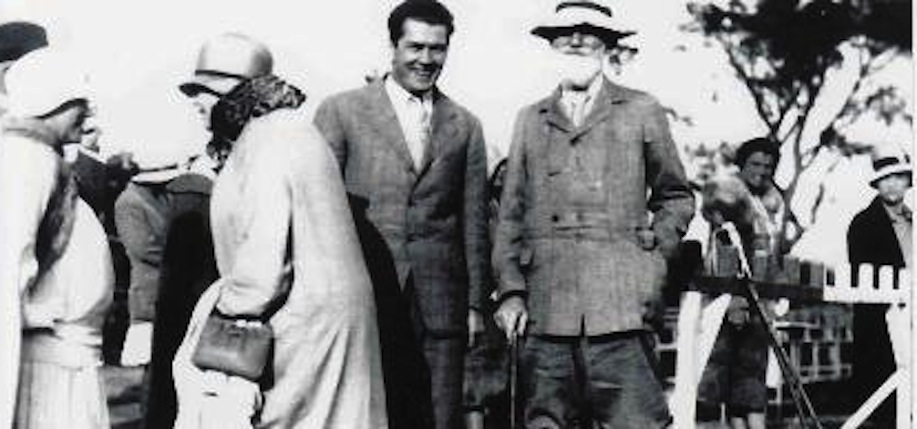
Great article, just want to let the author know Gene Tunney was not 2 time heavyweight champion. In order to be 2 time heavyweight champion Tunney would of had to of lost the heavyweight championship, something he never did.
Boxing is a mental sport at heart you have dig deep
Inside yourself to keep going when your beat and get up of the canvass
And win. All the time while this is happening your head is telling you stop this is crazy never again. Writers have to do the same thing conquer yourself.